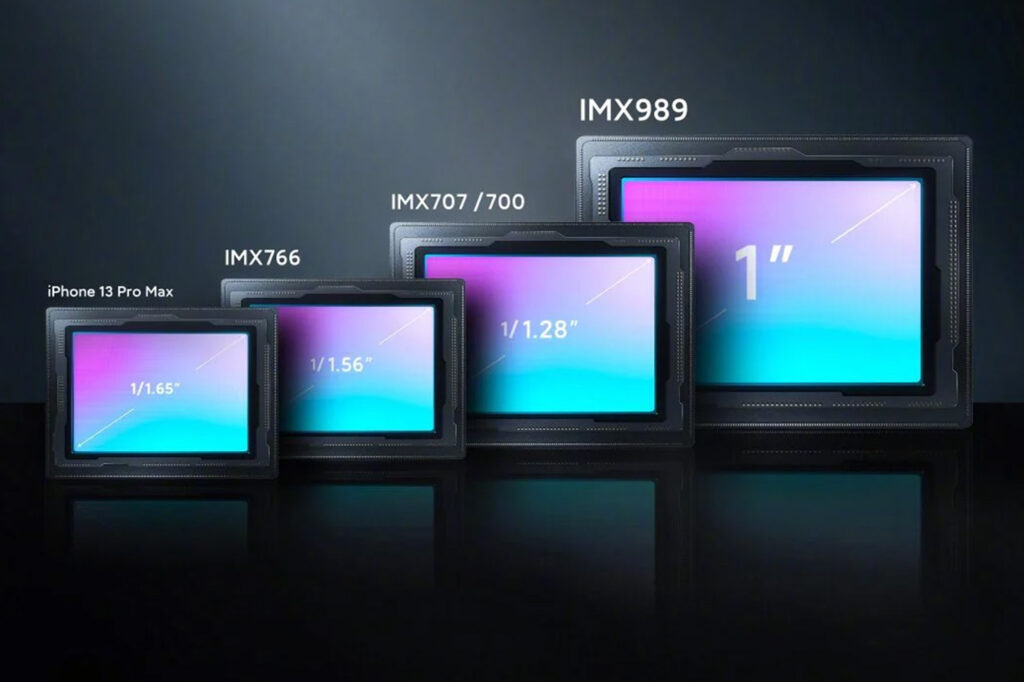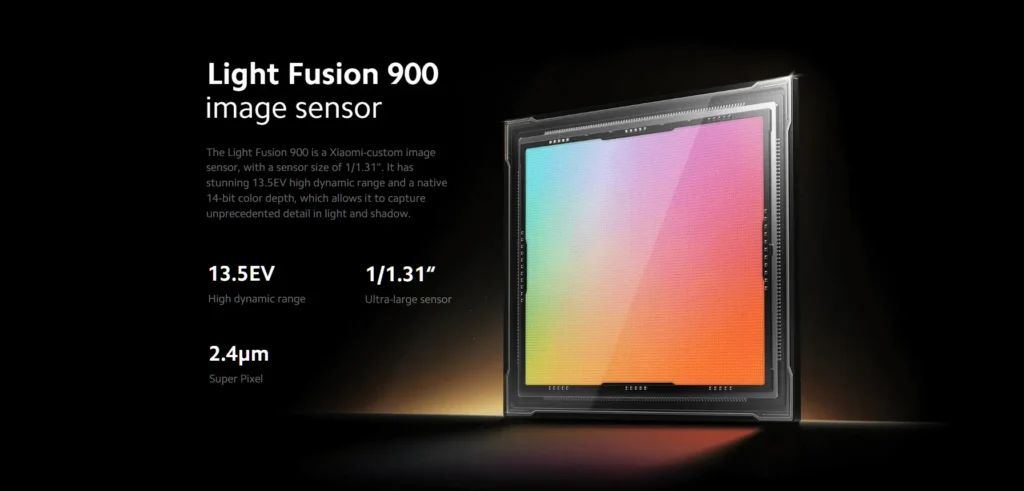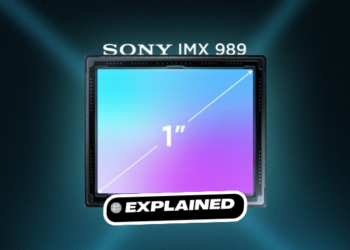Sony LYT: Sony is making ripples in the mobile world with the debut of its new LYTIA (LYT) camera sensors. These sensors represent a substantial departure from its famed IMX series. The LYTIA sensors are intended to give improved image experiences that are “beyond imagination,” establishing them as sophisticated successors with enhanced capabilities. Sony’s switch from the IMX series to LYTIA is a deliberate step to stay ahead of the competition, particularly against rivals such as Samsung’s ISOCELL sensors. This shift is already creating significant attention in the tech, with predictions of breakthrough performance increases.
The LYTIA lineup includes the flagship LYT-900. It boasts a 1-inch, 50-megapixel sensor designed for high-quality smartphone photography. Other models like the LYT-800, LYT-700 and LYT-600 cater to various imaging needs, from mainstream to high-end devices. These sensors promise better low-light performance, higher dynamic range, and faster processing speeds. These sensors are in direct competition with Samsung’s ISOCELL series and Omnivision’s OV50A, which are also pushing the boundaries of mobile photography. So, what’s so good about them. Let’s find out.
SONY LYT: The Next Generation Sensor
Sony’s LYT or LYTIA sensors are a significant leap from the already impressive IMX series. They offer advanced features that cater to the demands of modern photography and videography. The LYT-900, the flagship of the LYTIA series, features a 1-inch, 50-megapixel sensor with individual pixels measuring 1.6μm. The sensor boasts the same architecture as its well know predecessor, the Sony IMX 989.
It is designed to deliver exceptional image quality and superb tonal expressions. This sensor has already become a favorite among flagship smartphones like the Xiaomi 14 Ultra and Vivo X100 Pro+.
What sets LYTIA sensors apart is their innovative approach to imaging technology. They incorporate advanced stacked CMOS architecture, which enhances dynamic range and improves low-light performance, making them ideal for capturing stunning photos and videos in any lighting condition. Additionally, these sensors support high-speed data transfer and efficient power consumption, ensuring that mobile devices can handle intensive imaging tasks without compromising battery life. This whole premise has made the LYT range a phenomenal successor to it IMX series.
Sony LYT Generations
Sony’s new LYTIA (LYT) sensor family is a big step forward in imaging technology, with each iteration bringing unique enhancements targeted to specific imaging requirements. The LYT 600, 700, 800, and 900 models demonstrate Sony’s commitment to pushing the boundaries of mobile and professional photography.
SONY LYT 600
The LYT 600 sensor is designed for versatility and performance in a compact form. With a 1/1.95-inch CMOS size, this sensor is ideal for applications requiring a smaller sensor footprint but still demands high-quality imaging capabilities. The LYT 600 excels in telephoto and periscope applications, providing excellent detail and clarity even in challenging lighting conditions. This makes it a perfect choice for smartphones and compact cameras looking to integrate powerful zoom features without compromising image quality.
Sony LYT 600 sensor range is already making waves by using in budget range models such as
- Realme GT 6T
- OnePluse Nord CE4
- Oppo Reno 11
Sony LYT 700
The LYT 700 sensor expands on the foundation built by its predecessors, featuring a 1/1.56-inch size that strikes a balance between sensor size and performance. It has excellent HDR capabilities that considerably improve its ability to capture photographs with a wide dynamic range, making it suitable for situations with contrasting lighting conditions.
This sensor is ideal for mid-tier to high-end smartphones and other devices that require outstanding image quality. The LYT 700 also integrates Sony’s latest technology for rapid autofocus and noise reduction, ensuring sharp and clear images even in low-light conditions.
Sony LYT 700 sensor range is currently used in devices such as
- Motorola Edge 50 Fusion
LYT 800
Sony LYT 800 sensor features a 1/1.43-inch sensor size and introduces a groundbreaking 2-layer transistor pixel structure. This innovation allows for greater saturation signal levels, which translates to richer colors and better overall image fidelity. The LYT 800 is designed for flagship smartphones and professional-grade cameras, providing exceptional performance in both photo and video applications. Its ability to maintain high image quality in various lighting conditions makes it a versatile choice for both casual photographers and professionals
Sony LYT 800 series was used in models such as
- OnePlus 12 (LYT 808)
- Xiaomi 14 CIVI
LYT 900
At the top of the LYTIA series is the LYT 900. It is the flagship model that epitomizes Sony’s cutting-edge imaging technology. This 1-inch, 50-megapixel sensor boasts individual pixels measuring 1.6μm, ensuring unmatched detail and clarity. The LYT 900 is designed to deliver superb tonal expressions and high dynamic range, making it the ideal choice for premium smartphones and high-end cameras.
It promises to elevate mobile photography to new heights, providing capabilities that rival traditional digital cameras. The LYT 900 is set to feature in upcoming flagship devices from leading manufacturers, highlighting its role as a game-changer in the imaging industry
It’s designed for premium smartphones, such as the
- Vivo X100 Pro+
- Xiaomi 14
- Xiaomi 14 Ultra
Sony LYTIA: How they work?
Sony’s LYTIA sensors utilize advanced CMOS (Complementary Metal-Oxide-Semiconductor) technology to capture breathtaking images. CMOS sensors are renowned for their efficiency in converting light into electronic signals. Therefore, making them ideal for high-speed image processing and low power consumption. The sensor size plays a crucial role in image quality: larger sensors, like the 1-inch LYT 900, allow for larger individual pixels, which can capture light and detail. This results in superior image quality, especially in low-light conditions.
The LYTIA sensors feature a stacked architecture. It means multiple layers of circuitry are integrated into a compact form. In other word, this design enhances the sensors’ ability to handle more data and process images quickly.
Additionally, the advanced pixel design in these sensors, including the 2-layer transistor pixel structure in the LYT 800, enables higher saturation signal levels, resulting in richer colors and greater dynamic range. These technological advancements ensure that LYTIA sensors deliver sharp, vibrant, and detailed images, making them a top choice for modern smartphones and cameras.
Sources: Sony / Notebookcheck





![Sora Open AI: The AI Video Generating Tool [Explained]](https://curioussteve.com/storage/2024/03/Open-AI-Sora-Explained-120x86.webp)

![Sketch.metademolab: Bring children’s drawings to life [Explained]](https://curioussteve.com/storage/2023/08/Sketch.metademolab-120x86.webp)


![Sora Open AI: The AI Video Generating Tool [Explained]](https://curioussteve.com/storage/2024/03/Open-AI-Sora-Explained-350x250.webp)

![Sketch.metademolab: Bring children’s drawings to life [Explained]](https://curioussteve.com/storage/2023/08/Sketch.metademolab-350x250.webp)


Discussion about this post